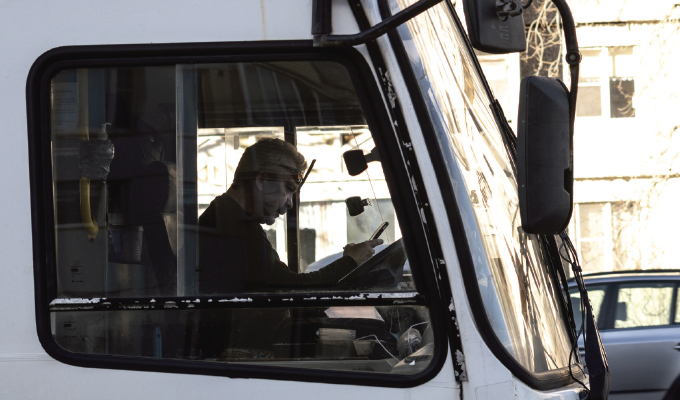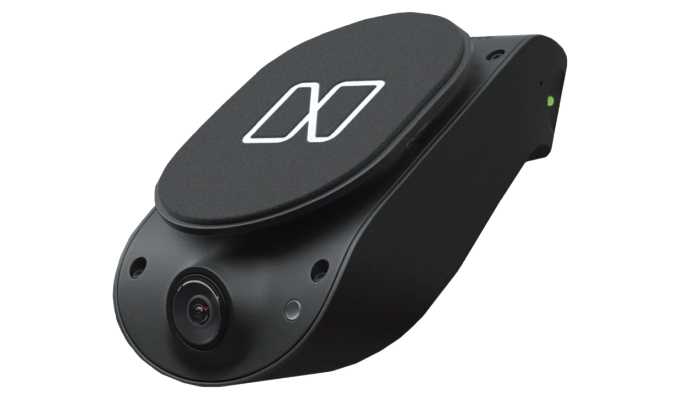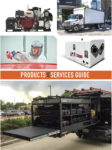According to the Bureau of Labor Statistics, car accidents are the number one or number two cause of work-related deaths in every major industry. In 2020, work-related crashes made up 22% of all work-related deaths. Also in 2020, 11% of all work-related deaths involved off-road motoring or pedestrians struck by motor vehicles. In May 2022, the National Highway Traffic Safety Administration published statistics on distracted driving in the year 2020 and found that 35% of traffic accidents were caused by distracted driving. Statistics aside, we’ve all seen the driver in the lane beside us scrolling or texting on their phone at some point. These statistics and our own observations prove that distracted driving is a major problem for work truck drivers and the public at large.
With the current driver shortage only growing, fleets are looking for ways to retain their drivers, and maximizing safety on the road is one aspect they’re looking into. Buying trucks with advanced safety technology and employing telematics, driving logs, cameras, radars, and artificial intelligence (AI), it seems fleets will stop at nothing to keep their drivers safe. Although safety is the reason behind the technology adoption, some drivers might be hesitant to welcome the intrusive technology into their cabs for fear of loss of privacy. After all, who wants Big Brother watching their every move?
One company hopes to change the stigma some drivers feel toward AI and cameras by offering a safety technology that still allows drivers to maintain their privacy. That company is Nauto.
FEEDBACK FROM AI
Artificial intelligence has recently made headlines (thanks, ChatGPT), and it’s brought some members of the public to wonder “Will my boss replace my job with a computer?” “Will computers become smarter than people?” “Will computers take over the world?” It sounds far-fetched, but it’s enough to keep society wary of this new technology barreling toward them. Contrary to the science fiction adaptations of this technology, AI is an incredible, useful technology that can be used in multiple aspects of life to make work easier and make us safer. That’s where Nauto steps in.
Nauto began eight years ago with a simple vision: Use AI and computer vision to help the driver rather than replace the driver—after all, in service applications, the driver simply cannot be replaced as they are service technicians, plumbers, electricians, utility workers, and more. Nauto uses a small device that retrofits to the vehicle’s windshield. This device uses computer vision to detect what’s happening on the road and determine risks, including driver distractions. If the device detects a distraction or poor driving behavior, the device will audibly notify the driver with an alert or real-time voice feedback to correct the behavior. Stefan Heck, Nauto founder and CEO, says this alert eliminates about 25% of collisions on its own.
This feedback makes drivers aware of the mistakes they’re making or the amount of times they take their attention away from driving. Heck says 80% of drivers drop about 80% of their distractions in just one week after implementing Nauto. Not only do drivers eliminate collisions from their own mistakes, but being more aware also helps them navigate others’ mistakes, eliminating even more potential collisions in the process.

VIDEO AS AN OPTION
Because Nauto uses computer vision and AI to process data in real time inside the vehicle without storing it, drivers won’t feel like they’re being “watched.” However, if a fleet manager wants to capture video, Nauto provides that option. The difference between Nauto’s video capture and other companies’ video capture is that Nauto records only what the fleet manager elects to have recorded. For instance, if a fleet manager decides they only want to see footage of near-misses, close calls, and collisions, then only those events will be recorded and sent to the fleet manager. Fleet managers won’t have to sift through footage of drivers looking down to grab their drink from the cup holder, briefly glancing at their phone to view navigation directions, or other low safety risks. Talk about saving time.
In fact, because Nauto has proven to make drivers better, many drivers might also want to have a video recording of collisions. If the collision wasn’t the fault of the driver, the footage can help exonerate them.
MAINTAINING PRIVACY
Although video capture can help drivers in many instances, some drivers could still be hesitant to have a camera facing them the extent of their working day. On the other hand, fleet managers often see the importance of cab transparency. That’s something Nauto has learned to navigate in a way that pleases all parties. “The idea that whether you have the camera recording or whether you have the safety system alerting you and warning you—those are two separate things for us,” Heck explains. Nauto allows drivers to receive alerts without activating video recording.
“We want the driver to get feedback and alerts,” Heck says. “Whether or not anything is recorded is an explicit decision.” He says the system starts from recording nothing, and then it’s up to the fleet manager to decide what other events they’d like to see on camera. Even if a fleet manager does elect to capture video for every risk, the system records only about 0.4% of driving time. Heck says that drivers have shared their concerns of being recorded while singing along to the radio or talking to their spouse while driving, but because Nauto only captures event footage, Heck says that unless those actions cause a collision, the drivers maintain their privacy.
NEXT MONTH
This article continues in next month’s issue, covering what triggers the system to record and when, how Nauto takes context into account, how the system helps with fleet manager and driver coaching, and additional benefits of the Nauto system.
FOR MORE INFORMATION
Look for the second part of this article in next month’s issue. Find out more about Nauto, visit www.nauto.com.




